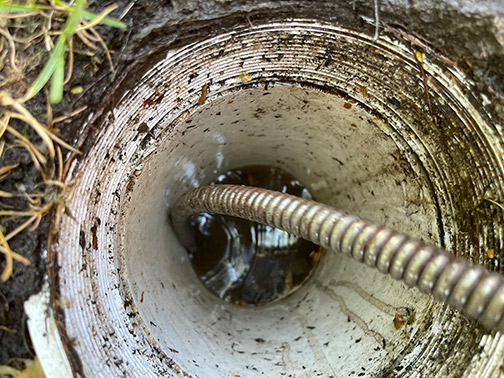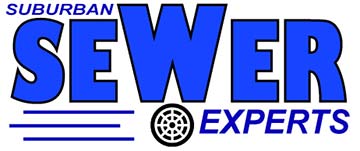
Drain cleaning methods include a range of techniques used by homeowners to clear debris from clogged or blocked drainage pipes and sewer lines. According to Wilson Management, drain cleaning is an essential tool for maintaining the health and function of your drainage lines and sewer system.
That is because at some point, your drainage pipes and sewer lines will suffer from clogs and blockages. These occur when solid and semisolid materials in wastewater settle in the pipes, instead of flowing out of them.
Depending on the type of solid or semisolid materials inside the pipes and the duration the process happens, the pipe channel will eventually become narrowed or completely blocked. When this happens, your home will experience problems such as slow drains and sewer odors.
To fix these issues, the most effective solution is to clean the drainpipe. This helps to loosen or dislodge the debris inside the pipes, making it easier to flush them out of the system. Different drain cleaning methods will do this to varying degrees.
There are two types of drain cleaning methods: traditional and modern drain cleaning methods. Traditional methods include using a plunger, a plumbing snake, or an auger to clear the debris from the drainpipes.
The primary modern drain cleaning method is hydrojetting. Today, we will discuss the pros and cons of these two methods and which one serves your purpose.
Pros and cons of traditional drain cleaning methods
Plungers, plumbing snakes, and augers are drain cleaning methods that most people are fairly familiar with:
- Plungers: Plungers are probably the oldest method for removing clogs in a home’s drainage pipes. They use suction to pull blockages from the pipes.
- Drain snakes and augers: These work by inserting a cable into the blocked drain and using it to prod the blockage loose. They can be manually operated or motorized.
Pros
- Immediate relief: Traditional drain-cleaning methods offer immediate relief. In minor drain emergencies, they can be used to restore flow quickly.
- An effective self-help option: Homeowners do not need to hire a professional plumber to clean their drains because these methods are suitable for DIYs.
- Cost-effective: Other than their initial purchase price, it doesn’t cost homeowners anything to use a plunger or a consumer-grade drain snake.
Cons
- Limited reach: Traditional drain-cleaning methods are only suitable for removing clogs that are near the drain opening. If a clog is deep inside the line, they can’t dislodge it.
- Temporary relief: Augers and plumbing snakes only bore a hole through the center of the clog. This restores flow temporarily, but leaves the clog in place to cause future problems.
- Higher long-term costs: Because they don’t address the problems fully, traditional drain-cleaning methods allow the issues in your drains to worsen until they cause an emergency in your home.
Pros and cons of hydrojetting
Hydrojetting uses high-pressure water to clear out clogged drain lines. A high-pressure flexible water hose and stainless-steel nozzle are inserted into the pipe, and water under very high pressure is delivered directly into the line to clear out the debris inside.
Pros
- Effective against stubborn clogs: Tough clogs such as mineral deposits, grease buildup, and tree roots are no match for hydro jetting. The pressure of the water will not just dislodge the debris inside the line, but also scour the pipe walls to remove any dirt that is stuck to them. This ensures thorough cleaning and long-lasting results.
- Optimizes flow: Hydro jetting loosens the debris inside the pipes and also washes it out of the line. Unlike traditional drain-cleaning methods that leave the dislodged dirt inside the pipes, hydro jetting clears the dirt out to achieve optimum flow.
- Versatile: Hydro jetting works for all types of drain clogs and blockages, whether they are near the drain opening or deep within the system. You can use this method to clean small and large pipes in residential, commercial, and industrial drainage systems.
Cons
- A professional method: While you can jet your drainpipes yourself by hiring a jetter, hydro jetting is best done by a professional plumber with expertise in modern drain-cleaning methods.
- Unsuitable for fragile pipes: If used in brittle aging drainpipes, hydrojetting may worsen the existing problems. Before jetting a line, a sewer camera inspection should be done to determine its condition.
When should you use hydrojetting versus traditional drain-cleaning methods?
Use hydrojetting if you have these problems in your home:
- Recurring clogs: When a fixture drain clogs often and you have tried to clean it with traditional methods, without any success, please use hydro jetting.
- Multiple clogs: If several drains in your home are slow or clogged at the same time, the problem is often deep inside the drainage pipes, where only hydro jetting can reach.
- Sewage odors: The smell of raw sewage in your home is a sign of severe blockages in your drainage system. This kind of problem is best addressed with hydro jetting.
Lastly, hydro jetting is the best drain-cleaning method for preventive drain maintenance. Jetting your drains on a schedule, even when there are no obvious issues, is the most effective way to detect drainage problems and repair them before they cause major problems in your home.

